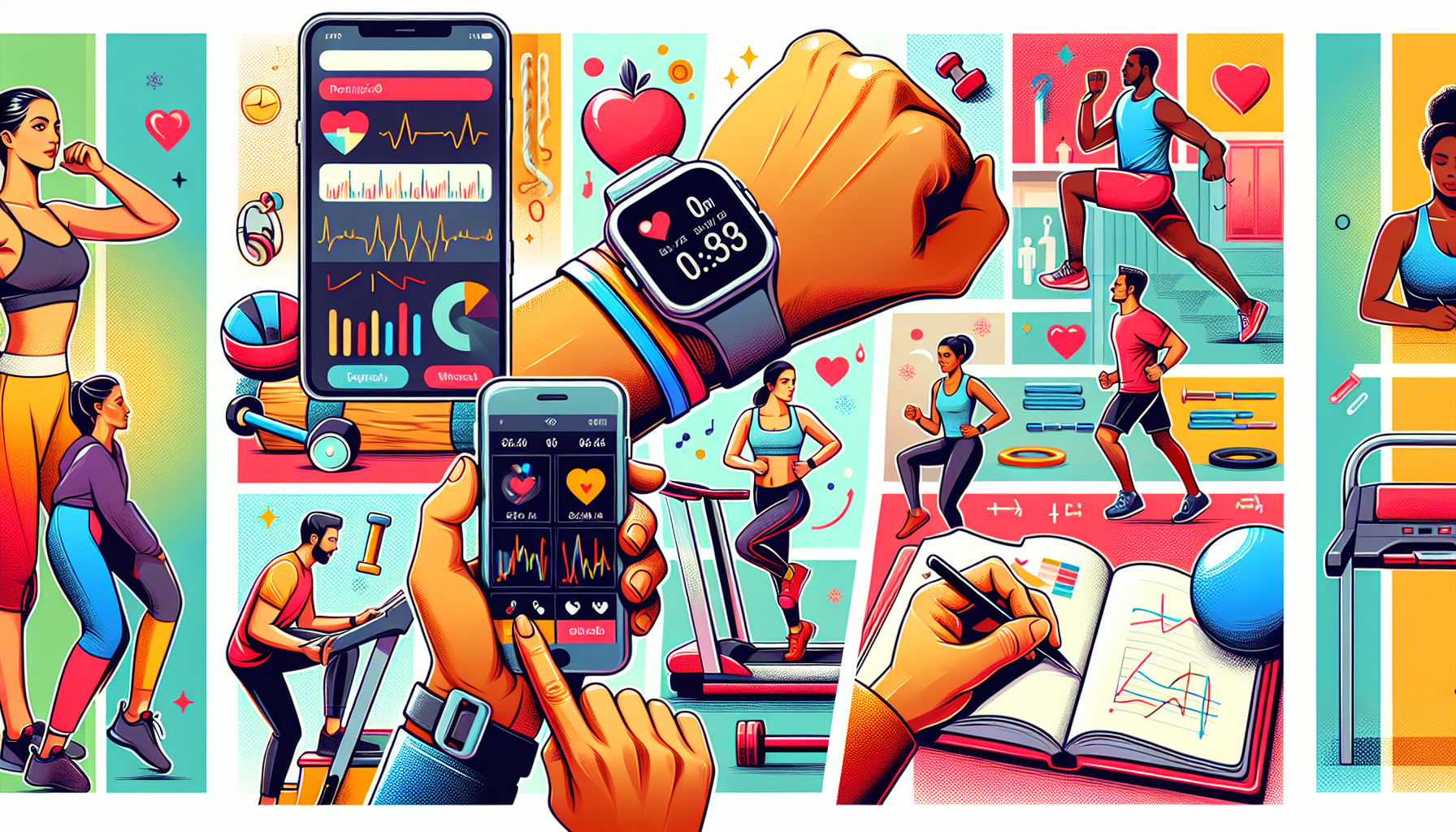In the pursuit of health and fitness, progress can be elusive and difficult to measure. Traditional metrics like the number on the scale or the size of one’s waistline do not always accurately reflect one’s health or fitness levels. Fortunately, there are several alternative methods to track fitness progress that offer a more comprehensive view of your health journey. This article explores a variety of innovative strategies that go beyond conventional measurements, offering insight into the multifaceted nature of fitness and well-being.
The Limitations of Scale and Tape Measurements
While weight scales and tape measures are familiar tools in measuring fitness, they fall short in providing the full picture. Body weight can fluctuate due to factors like hydration levels, and it doesn’t differentiate between muscle and fat. Similarly, tape measurements can’t account for muscle density or the distribution of body fat.
Exploring Alternative Fitness Metrics
Instead of fixating on the scale, consider these alternative methods to gauge your fitness progress:
1. Body Composition Analysis
Body composition analysis divides your weight into different components, such as fat mass and lean mass, offering a clearer understanding of your physical makeup. Advanced methods like Dual-Energy X-ray Absorptiometry (DEXA) scans provide precise measurements, but simpler bioelectrical impedance scales are more accessible for home use.
2. Performance-Based Goals
Tracking improvements in your physical capabilities, such as increased strength, endurance, or flexibility, can be more indicative of your fitness level. Set specific goals like a faster running time, more repetitions of a strength exercise, or an extended yoga pose hold.
3. Fitness Trackers and Wearables
Modern fitness trackers have revolutionized personal health monitoring, offering detailed insights into steps taken, heart rate, sleep quality, and even stress levels. These devices help in setting goals and monitoring progress over time.
4. Health Markers
Health markers like blood pressure, cholesterol levels, and blood sugar can be significant indicators of fitness progress, especially when improving cardiovascular health is a goal. For more information on this topic, visit the comprehensive resource on cardiovascular health.
5. Functional Movement Screening
Functional Movement Screening (FMS) assesses the quality of movement patterns and identifies asymmetries and limitations, which can help tailor a fitness program to address individual needs.
6. Recovery Rate
Assessing how quickly your heart rate returns to normal after exercise is a good indicator of cardiovascular fitness. The quicker the recovery, the fitter you are likely to be.
7. Psychological Well-being
Fitness isn’t just physical. Mental health improvements, such as reduced stress or better sleep, can signal progress. Techniques like meditation for athletes can be an essential part of a holistic fitness approach.
Integrating Alternative Methods into Your Routine
To effectively incorporate these alternative methods into your fitness routine, consider the following steps:
Identify Goals and Relevant Metrics
Begin by defining clear fitness goals. Whether it’s improving strength, enhancing flexibility, or boosting cardiovascular health, identify which alternative methods best align with your objectives.
Use a Multi-Faceted Approach
Don’t rely on a single measurement. Combine various methods to get a comprehensive view of your progress. For example, pair body composition analysis with performance-based goals to measure both physical changes and improvements in abilities.
Embrace Technology
Leverage technology such as fitness trackers and health apps to gather data and track trends over time. These tools can provide valuable feedback and motivation.
Consult with Professionals
Consider working with fitness professionals or healthcare providers who can guide you in selecting the right metrics and interpreting the results.
Regular Assessment
Periodically reassess your metrics to track progress and adjust your fitness plan as needed. This will help you stay on course and recognize achievements.
Beyond Measurement: Fostering a Positive Relationship with Fitness
While tracking progress is important, cultivating a positive mindset towards fitness and health is crucial. Celebrate the small victories, listen to your body, and remember that fitness is a lifelong journey, not a destination.
Supporting Resources
For further reading on related topics, explore these external resources:
- National Institutes of Health: Offers extensive research on various health markers and their importance in tracking fitness progress.
- American Council on Exercise: Provides resources on functional movement screening and its role in personalized fitness programs.
- The Sleep Foundation: Discusses the relationship between sleep quality and fitness, emphasizing the need for rest in recovery.
As you embark on or continue your fitness journey, remember that success is not just about the numbers you see on a scale or the size of your clothes. It’s about how you feel, how you perform, and how you embrace a healthier lifestyle. Use these alternative methods to track your fitness progress, and you’ll gain a deeper understanding of your health and well-being.
For further inspiration and guidance on your fitness journey, explore more articles like How Yoga Complements High-Intensity Fitness Training, The Relationship Between Physical Activity and Anxiety Reduction, and Creating Lifelong Fitness Routines for Health and Vitality at Avix Health.



